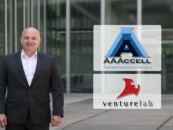
Highlights of the European ETF Industry in 2022: White Label Platform Competition Heats up
by Detlef Glow, Director of Lipper EMEA Research, Refinitiv May 2, 20232022 was a remarkable year for investors around the globe. Some may call it a year for the history books. Major economic and geopolitical headwinds resulted in falling equity and fixed-income markets around the globe.
In the aftermath of the COVID-19 pandemic, investors were concerned about the still-disrupted delivery chains and increasing inflation rates when the year started. All these concerns became overshadowed by Russia’s invasion of Ukraine because this meant that investors had to rewrite their playbook for the year.
The war in Ukraine led to increasing prices for energy and food, which fueled already-increasing inflation rates. As a result, central banks around the globe had to act even more harshly to fight inflation. They sharply increased interest rates in some cases, which led to losses in nearly all bond segments and also fueled the downturn in equity markets.
Within this environment, it was somewhat surprising that the European ETF industry enjoyed inflows over the course of 2022. That said, these inflows repeated a trend which we have witnessed over the course of other rough market periods. The European ETF industry enjoyed estimated inflows over the course of the financial crisis (2008), the euro crisis (2011), and the rough market environment in 2018. From my point of view, this means that European investors prefer ETFs in times of market turmoil, as they seem to value the transparency and tradability (liquidity) of these products.
From an industry perspective, it was surprising that AXA Investment Managers re-entered the European ETF landscape in September 2022 after a 13-year absence. That said, AXA might be preparing for a general change in the European fund distribution landscape, since the firm launched active ETFs. For example, AXA may expect that European regulators may allow semi- or non-transparent ETFs sooner rather than later and want to be prepared to launch ETFs based on its current product offerings of active funds.
White Label Platform Competiton Heats up
The competition in the space of white label platforms heated up over the summer of 2022, as Goldman Sachs and Waystone launched offerings in Europe. From my point of view, this shows that the European ETF industry has further matured and that there is demand from boutique and/or small asset managers to launch ETFs because the usage of the infrastructure of a white label platform makes a lot of sense—especially for these two types of asset managers.
In November 2022, we saw UniCredit close it last two ETFs and leave the European ETF industry. Even as some market observers might have seen this as a consolidation, the number of asset managers offering ETFs either directly or via a white label platform to European investors has increased over the course of the year.
One of the main events for the European ETF industry was the introduction of the regulatory technical standards (RTS) for the sustainable finance disclosure regulation (SFDR) in the EU. As the published standards were much higher than expected by the overall fund industry and market observers, a high number of mutual funds and ETFs got “downgraded” with regard to their respective classification by article under the SFDR. There were so many reclassifications from article 9 to article 8 in the European ETF market that some market observers raised the question of whether there would be any article 9 ETFs left on January 1, 2023.
The European ETF industry has written a true success story since its inception in the year 2000, but the future looks even brighter. I expect that the European ETF industry will continue to grow on an above average rate compared to the overall fund industry in Europe. The future growth will be driven by numerous factors from a wider adoption of ETFs by all kind of investors to product innovations and everything in between. With all these factors in mind, I forecast that assets under management will double to more than €2.5 tr before the end of 2030.

Assets Under Management in the European ETF Industry, January 1, 2000 – December 31, 2022, Souce: Refinitiv Lipper
ETF Yearbook
Other topics covered within the ETF Yearbook are:
- An analysis of the assets under management and fund flows on various levels of the European ETF industry.
- What happened in the segment of ESG-related ETFs over the course of 2022?
- Who are the leading custodians for the European ETF industry?
- Have ETFs using synthetic replication methodologies gained market share?
- Are factor investing ETFs back in the favor of investors?
- A review of ETF launches and closures.
- Which trends were visible related to total expense ratios (TERs)?
- Are ESG-related ETFs too expensive?
This article is for information purposes only and does not constitute any investment advice.
The views expressed are the views of the author, not necessarily those of Refinitiv Lipper or LSEG.






